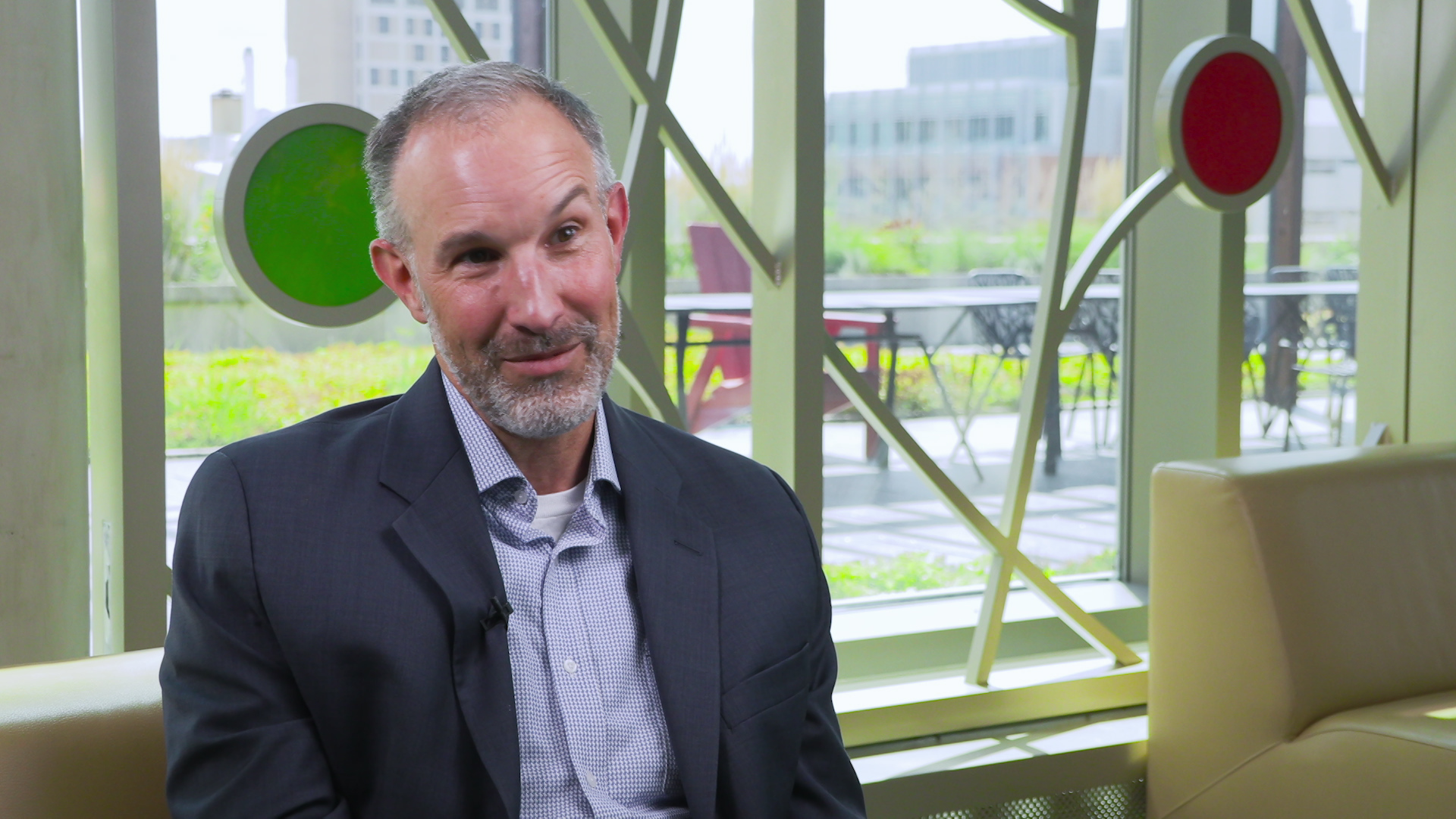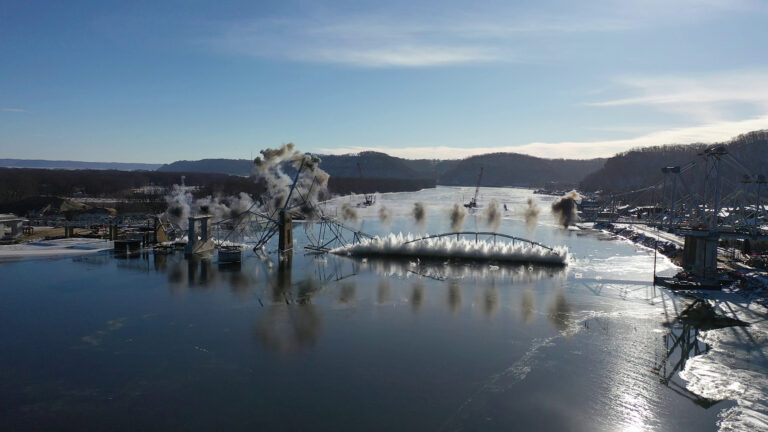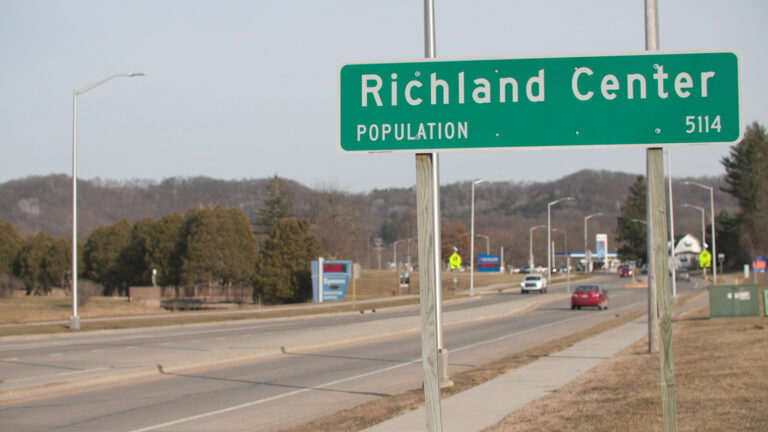Economic indicators, vibes and the 2024 vote in Wisconsin
Jobs and wages are up, but a bout of high inflation raised energy and grocery prices, provoking negative views of the economy among many Wisconsinites that may prove politically pivotal in 2024.
By Nathan Denzin | Here & Now
August 30, 2024
If the 2020 election was defined by COVID-19, the 2024 election is defined by the economy.
“The big issues that come up are housing, food, especially rent, and child care,” said J. Michael Collins.
“You’re seeing a pretty good increase in both grocery prices, but also prices as a whole,” Mike Semmann said.
“Inflation’s real. You know, we strongly feel that some of that is corporate greed, too,” said Kent Miller.
Since 2020, the American economy has been hard to pin down.
“So, the average worker today, I think on an hourly basis, is making about $6 more an hour than they were back before the pandemic,” said Collins, a professor at the UW-Madison La Follette School of Public Affairs studying consumer decision-making.
“The downside is inflation has also risen. So that extra $6, almost all of it has been eaten up by the cost of the stuff they have to pay for,” he added.

J. Michael Collins, a professor at the UW-Madison La Follette School of Public Affairs, discusses the state of the Wisconsin economy and inflation levels. “The downside is inflation has also risen. So that extra $6, almost all of it has been eaten up by the cost of the stuff they have to pay for,” Collins said. (Credit: PBS Wisconsin)
Cumulative inflation since 2021 when President Joe Biden took office has continued to climb.
“In 2019, if a consumer was paying $100 for groceries in 2024, they’re now paying about $125,” said Semmann, who is president and CEO of the Wisconsin Grocers Association. “So, really, there was a major economic shock to the system.”
“It has not been across the board inflation — it has been energy, things like your electrical bill, things like gasoline, and food,” Collins said.
Groceries are particularly responsive to rising energy costs.
“All of those things at the front end of the supply chain are going to have a major impact, because grocery stores only have about a 1 to 2% profit margin,” Semmann said.
Goods that are not purchased frequently, like a mattress, have much larger margins. That means when energy costs rise, a mattress business can eat some of the extra expense and still make a profit. But with groceries, the margin is so slim that any rise in production and transportation costs will show up when paying for them.
Supply chains broke down in the early days of the pandemic, which caused prices to rise dramatically.
“If you’ve got a ten cent increase in a transportation cost on the front end of the supply chain, that’s multiplied across every different point,” said Semmann. “And by the time it reaches the end consumer, they’re going to be feeling it.”

Mike Semmann, president and CEO of the Wisconsin Grocers Association, discusses the cumulative inflation increase since 2021. “In 2019, if a consumer was paying $100 for groceries in 2024, they’re now paying about $125,” Semmann said. “So, really, there was a major economic shock to the system.” (Credit: PBS Wisconsin)
Those price increases have led many to wonder if America is in a recession. The Marquette University Law School poll released Aug. 7 found that nearly two-thirds of Wisconsinites have a negative view of the economy.
“In terms of how the economy is humming along, there’s really no sign that we’re in a recession right now,” said Collins.
A recession is broadly defined as multiple quarters of negative GDP growth. That threshold was briefly met in mid-2022, but since then the economy has grown each quarter.
Other economic indicators, like unemployment and the stock market, also look positive. The S&P 500 has grown more than 45% since Biden took office, and the unemployment rate continues to hover near record lows of just under 3% in Wisconsin.
Wages in Wisconsin have increased roughly 25% across all jobs — enough to very narrowly beat inflation.
“We have been able to secure some unprecedented collective bargaining agreements — right, 19% increases over three years,” said Kent Miller, the president and business manager of the Wisconsin Laborers District Council of LiUNA, the Laborers International Union of North America.
“The bipartisan infrastructure bill in Wisconsin — that’s an extra billion dollars over five years in investment in roads and bridges and sewer and water infrastructure,” Miller said. “We have the Inflation Reduction Act, where we’re seeing tons of private investment, in utility scale solar and wind development and battery storage.”
Miller said LiUNA, which represents over 9,000 laborers in Wisconsin, has seen tremendous growth under the Biden administration.
“I think that there’s an estimate on just the IRA component in Wisconsin of, like, almost 19,000 jobs,” he said.

Kent Miller, president and business manager of the Wisconsin Laborers’ District Council of LiUNA, discusses the growth of employee wages in Wisconsin. “We have been able to secure some unprecedented collective bargaining agreements — right, 19% increases over three years,” Miller said. (Credit: PBS Wisconsin)
“Workers who are working on an hourly basis, whether that’s in manufacturing or construction or whatever it might be, are doing better than they were four or five years ago,” Collins said.
“And that’s because of the Biden-Harris administration,” said Miller.
“The question is, have they been able to swim faster than all these other things that are pushing against them,” asked Collins.
Groceries top that list, but Semmann said grocery stores have started to see inflation cool off.
“We’re seeing both a stability in prices in certain types of produce. But we’re also seeing a real decrease in prices in the produce area,” he said.
Take wage increases and a growing stock market, and combine it with high inflation and you get an economy that is, in Collins’ words, “kind of weird.”
He said it’s difficult to declare exactly how the economy is doing, especially since attitudes about it are so poor. When it comes to voters, their perception is reality. And until prices stabilize or drop across the board, negative attitudes about the economy will likely persist.
“People are not just trying to think about how they get through today,” said Collins. “They’re trying to think about how are they going to fare six months from now, or they’re making plans for next year, and whether that’s buying a house or going on vacation and like, are they gonna be able to afford that?”
 Passport
Passport











Follow Us